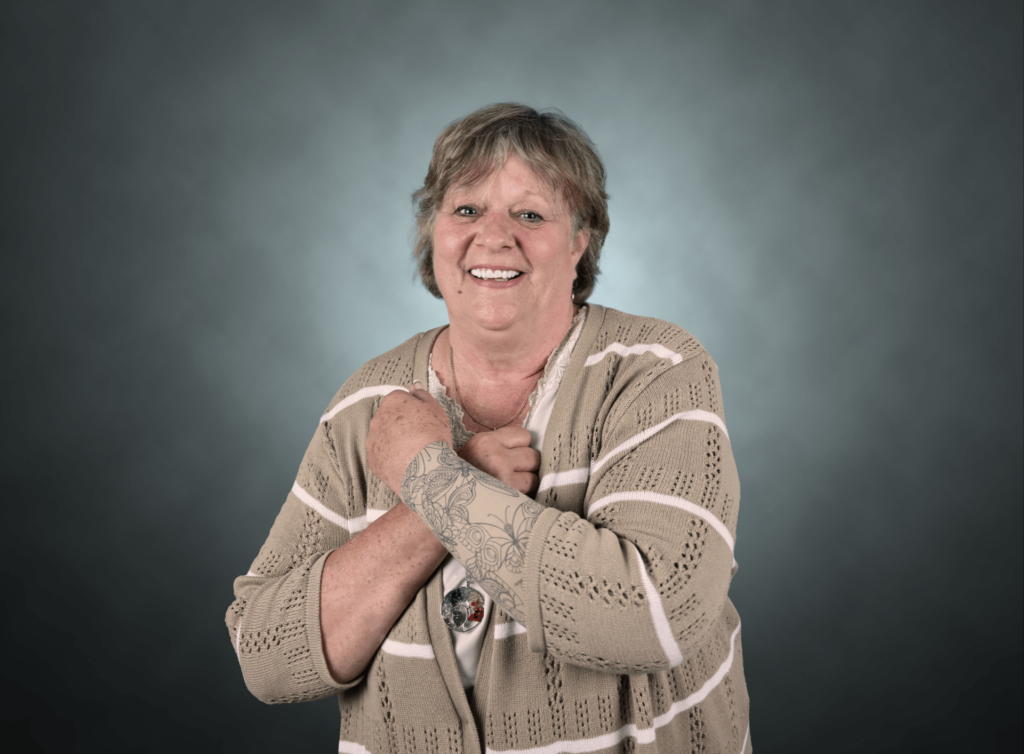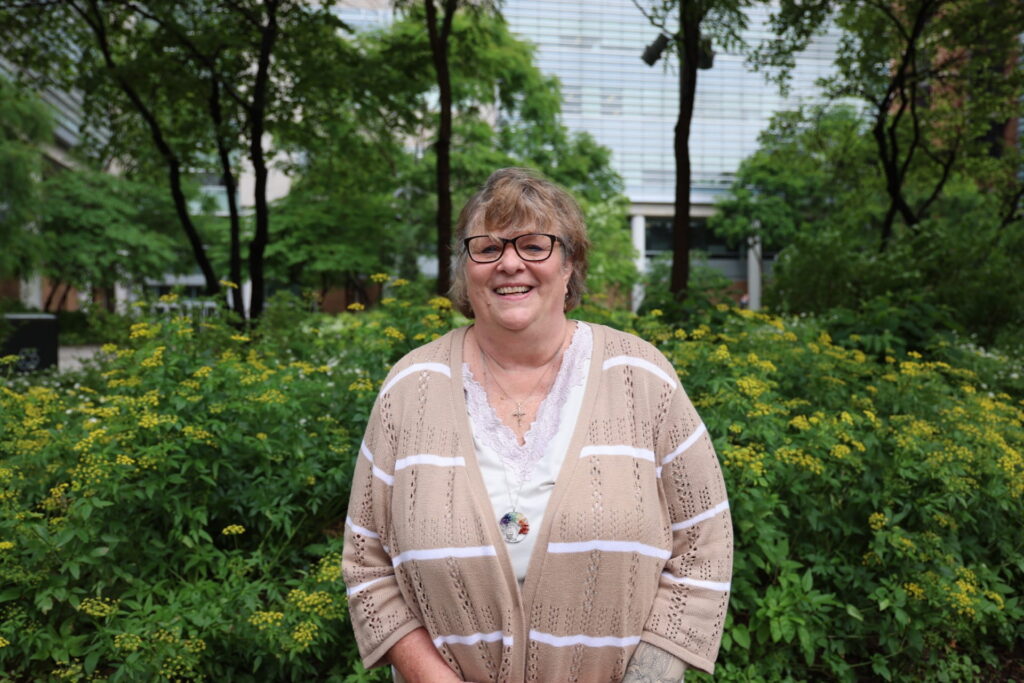Ginny Devenport started working in a mailroom at Washington University School of Medicine in St. Louis in 1976. At the time, she wasn’t sure what she wanted to do long-term, but she wanted to get her foot in the door at a place where she could learn more and grow professionally. Devenport quickly advanced from the mailroom with the Department of Pediatrics to medical coding. Seven years later, she joined the coding team in the Department of Surgery, where she has worked ever since. Now, after a 45-year career at the School of Medicine, Devenport retires.
Medical coders are like translators. They take a physician’s medical reports (also sometimes called op notes), containing information about the patient’s condition, the diagnosis and any procedures the physician performed, and turn them into codes that can then be used to create a bill for the insurance company. Coding can also be like detective work at times.
“Sometimes it takes some investigating to understand exactly what the doctor is trying to say in their op note,” Devenport says. One doctor might write something down one way, whereas another might have a slightly different way of noting the same thing. This is where an expert coder uses their investigative skills. When it is unclear what the surgeon’s operative note should be coded as, a certified professional coder, or CPC, can turn to their teammates. “The surgeries our physicians do are world-renowned. I have been fortunate to work with some of the best of the best. When we, the coders, encounter something we don’t understand in an op note, we can call each other and ask for a second opinion.”
For particularly tricky notes, Devenport would sometimes ask the physician directly.
“There is always something new to learn,” she says. “Sometimes you just have to talk to the surgeons and ask them what they did. They don’t mind teaching you, which truly helps. These are some of the best surgeons in the world. And they like to help you learn.”
Devenport learned coding on the job in the 1970s and 80s, first by translating pediatric medical reports into code. Over the years, she coded for a number of specialties, including transplant, HPB-GI, surgical oncology, minimally invasive surgery and pediatric surgery. As one might expect, a lot changed between 1976 and 2021.
One of the changes Devenport noticed was the formation of more specialized divisions and sections. Where many of the surgeons she coded for were once described only as “general surgeons,” the Division of General Surgery now has sections devoted to focused surgical specialties. Back before electronic records, the coders used to bring the charts from Barnes Medical Records to their office and code procedures and daily care notes from the physical charts. Devenport witnessed much of this shifting landscape as it happened.
Another change she saw firsthand was the implementation of certifications and continuing education opportunities. As these certifications became mandatory, Devenport pursued the training she needed to be a CPC.
“It wasn’t easy. I had kids—one in high school, one in grade school—and I had to go back to school to become a CPC,” she recalls. Now, as a CPC, Devenport has the credentials to back up everything she has learned over the years on the job and in the classroom. CPCs complete continuing education through the American Academy of Professional Coders, helping them stay current on new advances in the field.
The necessary COVID-related changes in 2020 were especially challenging for Devenport at first. Working remotely and logging on for virtual meetings was a massive shift. Devenport, who does not consider herself tech-savvy, was worried that she would struggle to adjust to these COVID-19 precautions early in the pandemic. Like many who have spent the past year working from home, though, she has become used to the change.
As much as things changed, Devenport also says that much has remained the same. The School of Medicine has always been a great place to have a career, she says. The surgeons continue to be world-class physicians, treating some of the most complex conditions. Construction keeps growing the medical campus to serve more patients and train more future leaders in healthcare.
Nothing but the Best
Devenport’s left arm is covered in an intricate design, easily mistakable for a full sleeve of tattoos. The design—a pattern of butterfly wings on one day, a rainbow of colors on another—is actually a compression sleeve to help reduce swelling caused by her lymphedema. Both Devenport and her husband have had thyroid problems. When their conditions required surgery, it was a Washington University physician who came to their aid. The late Jeffrey Moley, MD, was Devenport’s surgeon. Moley, who died in 2017, was a highly regarded endocrine surgeon and chief of what is now the Section of Surgical Oncology.
“He was such a good person,” Devenport says of Moley. “I liked his bedside manner. He always had time for you. You knew you were in good hands with Dr. Moley.”
Moley was not the only Washington University surgeon to care for Devenport during her tenure at the School of Medicine.
When she was diagnosed with breast cancer in 2017, she did not have to go far to find treatment. In fact, she recalls frequently walking between her office and the Center for Advanced Medicine for doctor’s appointments. When she needed surgery, she turned to Amy Cyr, MD, a surgical oncologist whose focus today is on helping women understand their risk for breast cancer and what they can do about it. Devenport now sees Katherine Glover-Collins, MD, PhD, for follow-up care. Devenport knew she was in good hands, both because of the national reputation of Washington University surgeons and because of her decades of working closely with them every day.
“I knew Amy Cyr because I had worked in the office with her. When I had my diagnosis, I went to her and asked her to be my surgeon,” Devenport says. She remembers going to Glover-Collins for her Port-a-Cath removal and follow-up appointments, before the pandemic, and being greeted with a hug.

Stories like this are representative of the larger story of Devenport’s career at Washington University. For 45 years, she has worked hard to uplift her teammates and support the surgeons and patients at the School of Medicine by translating what happens at the hospital into medical code. In those 45 years, she turned to the surgeons and other Washington University physicians around her for the highest quality care when she needed it. Though she did not know where her career would take her when she arrived in a medical school mailroom in 1976, Devenport has become an expert coder, trusted colleague and dear friend to many in the Washington University community.
“I have made so many good friends over the years, from the School of Medicine to Barnes and Children’s Hospital,” Devenport says. “It’s going to be difficult at first, but I look forward to keeping in touch with all of my friends after retiring. I wish for nothing but the best for everyone I’ve worked with over the years. They are like family to me.”
In retirement, Devenport plans to declutter her house, enjoy more time outdoors and, most of all, spend time with her family. Her breast cancer diagnosis, along with the loss of a number of family members over the past several years, has made her appreciate the precious time she has to be with the people she loves.
“My plan is to get things done and enjoy myself,” she says. “Life is too short.”
